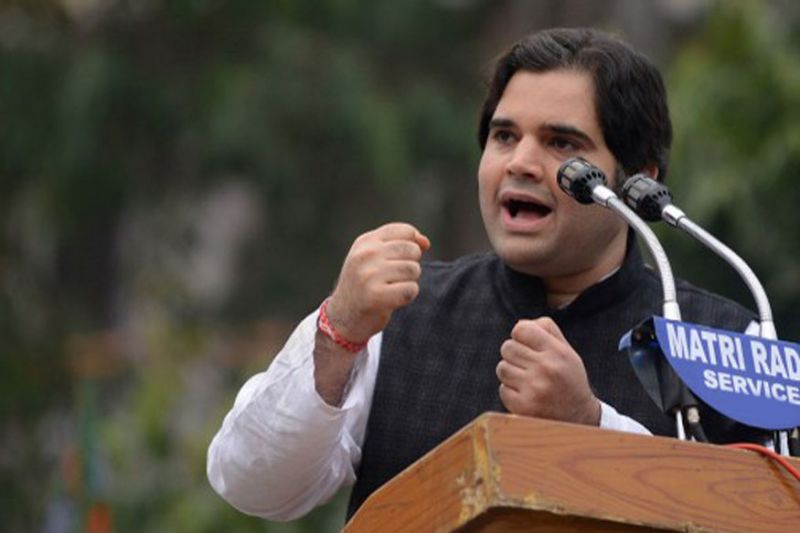By Varun Gandhi
India should ideally be in a sweet spot with regards to generating employment for its youth. Yet, there is something amiss. Somehow, each public sector vacancy draws a large multiple of applicants, most of them overqualified. Just recently, the Railway Recruitment Board conducted examinations to fill about 1.9 lakh posts. There were over 4.25 crore applicants, a ratio of 225 per vacancy, with even PhD holders applying for Group D staff positions. Similarly, for 62 police messenger posts in Uttar Pradesh, there were over 93,000 candidates, while for just five peon posts in Rajasthan, there were over 23,000 applicants.
In September 2015, there were over 23 lakh applications for 368 peon positions, with more than 250 doctorates and about 25,000 post-graduates applicants. Meanwhile, the Directorate of Economics and Statistics in Chhattisgarh received over 75,000 applications for just 30 peon posts in August 2015, while Jadavpur University, Kolkata, in April 2018 received over 11,000 applications for 70 peon posts.
Clearly, something is skewed in our job market. Even after the advent of privatisation, the public sector still offers better job security and a slew of post-retirement benefits that low-paying private sector jobs simply can’t match. The emolument for a general helper (the lowest-ranked government employee) is Rs 22,579, about double that in the private sector (Seventh Pay Commission). The challenge, it seems, lies in the inability of our economy to generate many jobs.
It is hard to quantify this problem, given that our labour market data itself is fuzzy and fragmented. National Sample Survey Organisation (NSSO) data on employment-unemployment, where available, is dated, while other sources have limited scope. Such surveys also fail to take into account the quality of employment, limiting our view on disguised and gainful employment. While the Seventh Quarterly Employment Survey (QES) indicates that 1.36 lakh jobs were created — much higher than the 64,000 jobs created in the preceding quarter — it cannot cater to the requirements of more than a million joining the workforce each month.
New Jobs, and Then Some
While Employees’ Provident Fund Organisation (EPFO) enrolments are utilised as a proxy, this can be inconclusive given that it could simply be including the formalisation of existing jobs as well. Bifurcating EPFO enrolment data into new employees joining firms already covered under EPFO (adjusted for multiple accounts) and employees in firms coming under the EPFO umbrella, driven by legislation might help.
Expansion of the scope and frequency of NSSO and QES surveys would also contribute towards bringing clarity.
About 80% of our employed workforce is engaged in informal employment, with just 17% actually being supported by a regular salary. The Fifth Annual Employment-Unemployment Survey highlighted that just 21.6% of the workforce actually availed social security benefits.
While, ideally, greater public spending could provide a solution to tackling this job crisis, there is limited headroom for such investment, given an eight-year investment slowdown, near-stagnant exports and an increasing import burden. Private investments continue to remain muted with significant spare capacities. The rise of automation further compounds this complexity, potentially closing off development pathways for India.
Over 69% of jobs in India are at threat due to automation, thereby ensuring that employment policy needs to focus on the creation of new avenues for employment. Meanwhile, employment generation in key industries (such as textiles) remains shackled by policy and intent.
India needs a finalised National Employment Policy, which besides areas of employment can provide policy inputs on various socioeconomic issues. Such a policy would articulate the nation’s aspirations for its youth to grow up safe, healthy, happy and resilient, while working towards a socially productive life. We need to reform labour laws and provide tax benefits to key employment-generating industries.
The apparel industry is over 80 times more labour intensive than automotives; about 240 times more labour intensive than steel; each incremental lakh rupee invested can create 29 additional jobs (including eight for women). Similarly, every lakh rupee invested in the leather and footwear sector can potentially create seven additional jobs.
Besides quantity of jobs, quality of jobs generated matters as well, which can be improved with improving the reach and intensity of skilling programmes. Additional job-based fiscal incentives can be explored for brownfield establishments, in addition to the existing range of activity-, location-or industry-based incentives.
We need to reform our employment exchanges, transforming them into job centres — privately or publicly run. They should offer aggregation of recruitment operations, connecting young people with employment, community and useful personal networks. Combining this with a social security benefit delivery would help streamline the welfare system as well.
Killer Skills
The National Skill Development Corporation (NSDC) should consider launching a Youth Development Support Programme, one which financially supports eligible NGOs that encourage the youth to develop skills, combined with apprenticeship programmes at a district level.
Entrepreneurship needs to be encouraged socially as well. Removal of barriers to opening an SME business remains key. A lack of access to finance, limited awareness about government schemes and infrastructural bottlenecks continue to stifle their growth. India’s banking sector needs to be pushed towards investing heavily in the SME sector. Instruments like atwo-year placement holiday in tertiary institutions like the IITs and IIMs should be utilised to boost risk taking.
Youth is a significant period of development. Providing India’s young with an encouraging environment is in our interests, and our responsibility. Unemployment remains their bane. Mere rhetoric will no longer do.
[source_with_link url=”https://blogs.economictimes.indiatimes.com/et-commentary/get-on-the-job-of-making-jobs/”]The Economic Times[/source_with_link]

